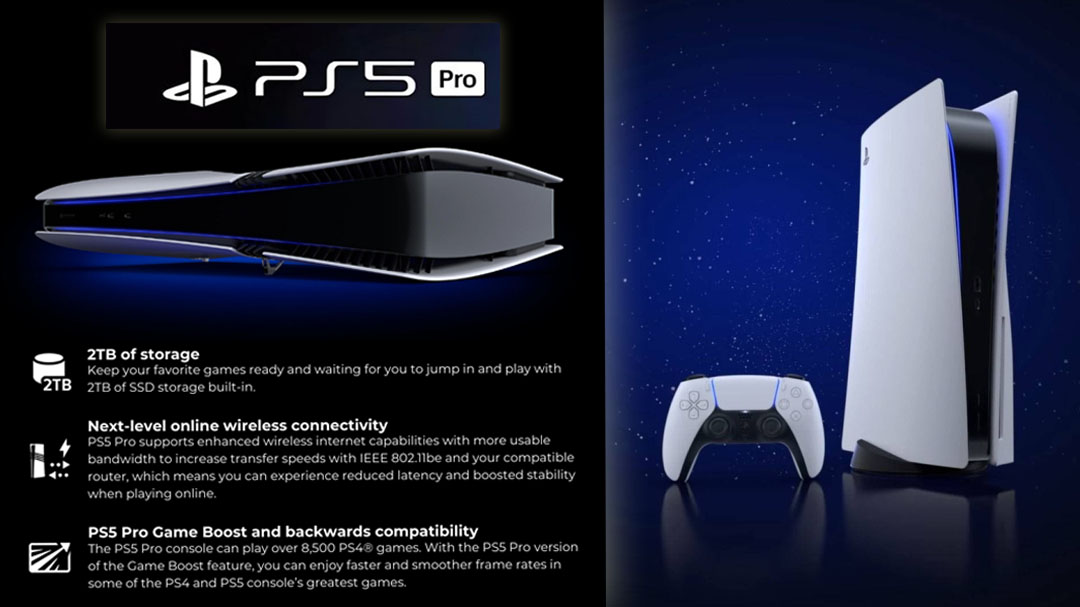Build a Django Discussion Forum: Step-by-Step Tutorial
Learn how to build a complete Django discussion forum with anonymous posting, user interactions, and...
Get instant access to the latest tech news, reviews, and programming tutorials on your device!
🔍 Search Latest International Tech News, Reviews & Programming Tutorials
Learn how to build a complete Django discussion forum with anonymous posting, user interactions, and...
These AI tools offer a range of functionalities to enhance the creative process for vloggers....
NASA astronaut Sunita Williams is returning to Earth with SpaceX’s Crew Dragon, utilizing advanced splashdown...

Our comprehensive PlayStation 5 Pro review examines enhanced 4K performance, ray tracing capabilities, and backward compatibility to help you decide if Sony's upgraded console justifies its premium price tag.
Nearly five years after the original PlayStation 5's release, Sony has followed its established pattern of mid-generation upgrades with the PlayStation 5 Pro. Promising enhanced performance, better graphics, and more stable framerates without sacrificing compatibility, the PS5 Pro aims to justify its premium price tag of $599. After three weeks of extensive testing across dozens of games, I'm ready to determine whether this upgrade is essential for PlayStation enthusiasts or an optional luxury for the most demanding gamers.
The PlayStation 5 Pro maintains the distinctive futuristic aesthetic of its predecessor with some notable refinements:
Port selection remains largely unchanged with:
Inside, the PS5 Pro features significant hardware improvements:
The included DualSense controller is identical to the standard model, with no Pro-specific enhancements beyond a matching color scheme.
The PS5 Pro's primary selling point is enhanced performance, and the console delivers substantial improvements across three key areas:
Games optimized for PS5 Pro demonstrate impressive improvements:
| Game | PS5 Performance | PS5 Pro Performance |
|---|---|---|
| God of War Ragnarök | 4K/40fps or 1440p/60fps | 4K/60fps or 1440p/120fps |
| Spider-Man 2 | 4K/30fps (RT) or 1440p/60fps | 4K/60fps with RT or 1440p/120fps |
| Horizon Forbidden West | Dynamic 4K/30fps or 1800p/60fps | Native 4K/60fps or 1800p/120fps |
| Gran Turismo 7 | 4K/60fps or 1440p/120fps | 4K/120fps with enhanced assets |
| The Last of Us Part II | 4K/30fps or 1440p/60fps | 4K/60fps or 1440p/120fps |
Even games without specific PS5 Pro patches benefit from the "Game Boost" feature, which typically provides more stable frame rates and occasional resolution improvements.
Ray tracing performance sees the most dramatic improvements, with the enhanced GPU enabling more advanced lighting effects without the substantial performance penalties seen on the standard PS5:
In titles like Marvel's Spider-Man 2 and Ratchet & Clank: Rift Apart, the PS5 Pro can maintain 60fps with ray tracing enabled at higher resolutions, whereas the standard PS5 typically requires lowering resolution or frame rate when using similar effects.
Despite using the same SSD architecture, the PS5 Pro demonstrates modest improvements in load times (typically 10-15% faster) and more significant enhancements in asset streaming:
New to the PS5 Pro is Sony's machine learning-based upscaling technology, PEST, which functions similarly to NVIDIA's DLSS or AMD's FSR but is optimized specifically for PlayStation hardware. The technology offers three modes:
In testing, PEST proves quite effective, providing noticeably better image quality than traditional upscaling methods. While not quite matching native resolution, the difference is minimal in motion, and the performance benefits are substantial.
The PS5 Pro maintains perfect backward compatibility with the entire PS5 library and benefits from the same PS4 backward compatibility as the standard PS5. Many PS4 titles see enhanced performance through Game Boost, with some receiving unofficial resolution and framerate improvements.
Sony has announced that over 40 popular titles will receive PS5 Pro optimization patches within the launch window, with more to follow. These optimizations typically include:
The PS5 Pro runs the same PlayStation OS as the standard PS5, with interface and functionality remaining identical. New features include:
The PS5 Pro is fully compatible with PlayStation VR2, and several VR titles receive performance enhancements that result in higher rendering resolutions or more stable frame rates.
The enhanced hardware does come with increased power consumption:
Despite the higher power draw, the improved cooling system keeps noise levels remarkably similar to the standard PS5, with the console operating at approximately 42-45 dB under full load—quiet enough to remain unobtrusive during gameplay.
At $599 for the digital edition (plus $79.99 for the optional disc drive), the PS5 Pro commands a $100 premium over the standard PS5. This price positioning raises important questions about its value proposition for different types of gamers:
For PS5 Owners: The upgrade is harder to justify unless you're specifically seeking enhanced performance in 4K gaming with ray tracing or have a 120Hz display that can benefit from the higher frame rates.
For PS4 Owners: Those still on PS4 who haven't upgraded to current generation will find the PS5 Pro offers a substantial leap in capabilities, though at a significant price premium over the standard PS5.
For High-End Display Owners: Gamers with 4K/120Hz displays or 8K TVs will see the most benefit from the PS5 Pro's enhanced capabilities.
Primary alternatives include:
The PlayStation 5 Pro delivers on its promises of enhanced performance, particularly for 4K gaming and ray tracing applications. The improvements are substantial enough to be immediately noticeable in optimized games, providing a meaningfully better gaming experience for those with displays capable of showcasing the differences.
However, the $100 premium over the standard PS5 makes this a luxury purchase rather than an essential upgrade. For most gamers, the standard PS5 continues to offer an excellent experience at a more reasonable price point. The Pro model is best suited for enthusiasts who demand the best possible performance from their console games and have the display technology to appreciate the enhancements.
For those who prioritize technical excellence and are willing to pay for it—particularly players with 4K/120Hz displays—the PS5 Pro represents the pinnacle of console gaming in 2025. Everyone else might be better served by the standard PS5 and putting the price difference toward additional games.
Comments & Discussion